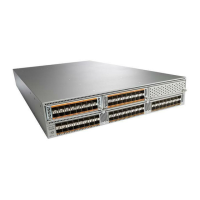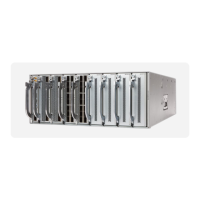When you associate an ACL with a SPAN session, you must ensure that its size is not greater than
the calculations given in the table above. Otherwise the SPAN session fails and generate a "TCAM
•
resource unavailable" error. If the ACL has Layer 4 Operations and TCAM resource expansion is
enabled, you need to know the expected expanded size and you need to use the expanded size to
calculate the maximum ACL size.
•
If you change the ACL that is attached to a SPAN session, the ACL size can exceed the maximum
ACL size allowed. In this scenario, the SPAN session continues to work with the modified ACL.
However, you should undo the ACEs added to the ACL to limit the size to maximum allowed ACL
size.
•
If you add a SPAN session when one already exists, then to modify the first span session there
should be free TCAM entries of size equal to number of ACEs in the associated ACL (Assuming
that each ACE requires one TCAM entry. If it gets expanded, the expanded size should be
considered). Therefore, TCAM entries consumed by the second SPAN session should be released.
•
To replace a large ACL with another large ACL (which could cause the SPAN session to enter a
generic error state), you must first remove the existing filter access group (using the no filter
access-group current acl name command), and then configure the new filter access group (using
the filter access-group new acl name command).
•
Local SPAN/SPAN on Drop/SPAN on Latency is not aware of VPC.
•
The following is the limitation for HIF and Virtual Ethernet (Veth) as SPAN destination:
•
Multi-destination SPAN is not supported. If HIF/VETH port is a destination, the monitor session
must have single destination.
Creating or Deleting a SPAN Session
You create a SPAN session by assigning a session number using the monitor session command. If the session
already exists, any additional configuration information is added to the existing session.
Procedure
PurposeCommand or Action
Enters global configuration mode.switch# configure terminal
Step 1
Enters the monitor configuration mode. New session
configuration is added to the existing session
configuration.
switch(config)# monitor session
session-number
Step 2
The following example shows how to configure a SPAN monitor session:
switch# configure terminal
switch(config) # monitor session 2
switch(config) #
Cisco Nexus 5600 Series NX-OS System Management Configuration Guide, Release 7.x
OL-31641-01 181
Configuring SPAN
Creating or Deleting a SPAN Session

